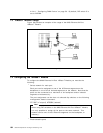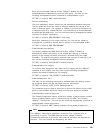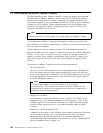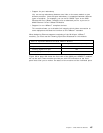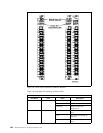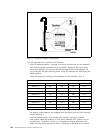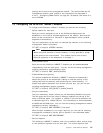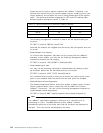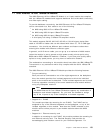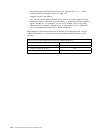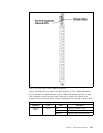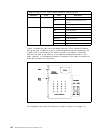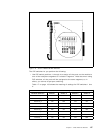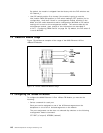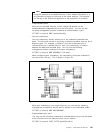
allows the port to receive signals compliant with 10Base-T standard. Low
squelch level allows the port to receive weaker signals, enabling you to have
longer distances, but increases the risk of losing packets due to the impulse
noise. The maximum distances supported for UTP and STP cabling under
different squelch settings are shown in Table 21.
The following management command is used to set the squelch setting for
the ports:
SET PORT {slot.port} SQUELCH {normal|low}
Note that the modules are shipped from the factory with the squelch level set
to normal.
•
Enable/disable link integrity
To connect older equipment, that does not fully comply with the 10Base-T
standard, to this module, you may use the following management module
command to disable the link integrity:
SET PORT {slot.port} LINK_INTEGRITY {enable|disable}
•
Enable/disable port alert
You may use the following command to enable/disable the sending of port
up and down alerts from the individual ports on this module:
SET PORT {slot.port} ALERT_FILTER {enable|disable}
This command may be used to allow you to monitor the status of the crucial
ports on your network while the alerts from the other ports are disabled.
•
Enable/Disable remote Diagnostics
The Remote Diagnostics feature allows this module to detect certain unusual
failure conditions when used in conjunction with the IBM Fault-Tolerant
10Base-T Transceiver. You can use the following management command to
enable/disable remote diagnostics:
SET PORT {slot.port} MODE {remote_diagnostics|non_remote_diagnostics}
Note
The 10Base-T specification specifies a minimum of 31 collisions prior to
partitioning of a port. The 8260 Ethernet 24-Port 10Base-T Module
automatically partitions a port when more than 63 collisions are detected on
that port. This value cannot be changed by the users.
Table 21. Maximum Distances for 20/24-Port 10Base-T Modules
Cable Type Normal Squelch Low Squelch
STP 100 M 300 M
UTP 22 100 200
UTP 24 100 150
112 8260 Multiprotocol Intelligent Switching Hub



